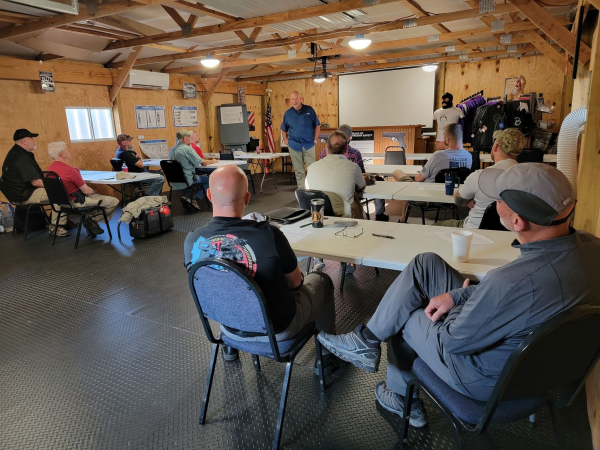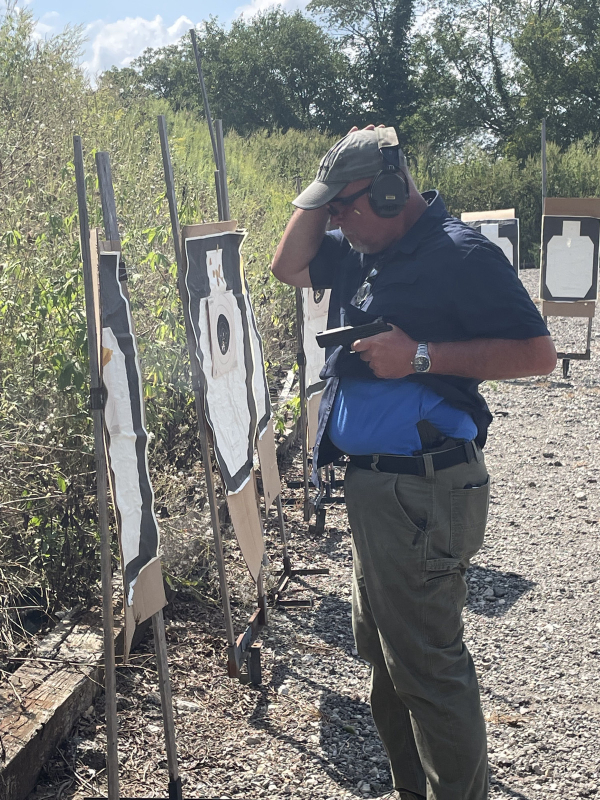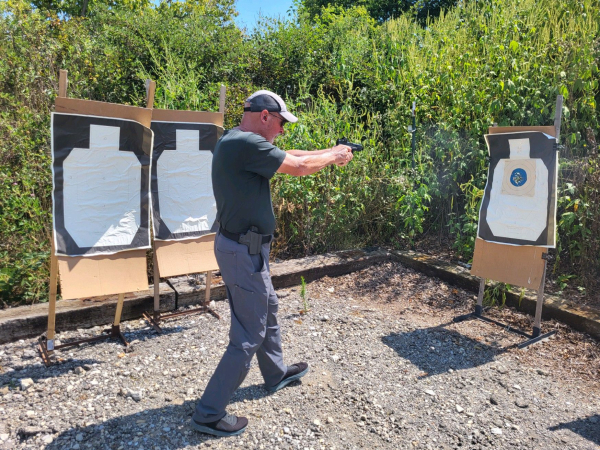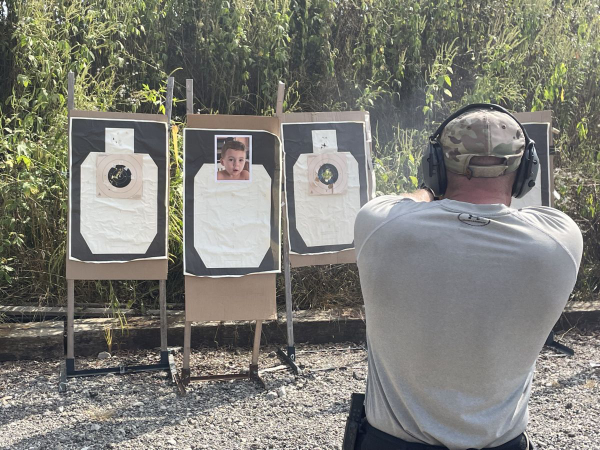Today’s feature is from correspondent Dave Spaulding.
The firearms training industry is larger than ever. The number of people who want to be considered “instructors” is immense. It’s almost as if no one wants to be a student…
For those who do, the selection of instructors and their doctrine is something that should be carefully considered. Yes, you can find courses that will immerse you in the world of special operations for a weekend, but is that what you really need? With hard economic times on the horizon and ammo being very expensive, is that where you want to spend your hard-earned money? Consider carefully.
I had the opportunity recently to attend a course that I was very happy to see was solidly based in foundational skills, the type of skills you will need to defend your life or the lives of those you love. The course was taught by an “industry luminary,” retired law enforcement officer Wayne Dobbs. Wayne and his partner Darryl Bolke, another retired law enforcement officer, created Hardwired Tactical Shooting (HiTS) over a decade ago in an effort to bring proven firearms training to the legally armed citizens nationwide. Nothing flashy or “cool looking”, just solid skills that have been proven to work time and again.
I opted to use a “Gucci Glock” 19 I built during the pandemic lock down. It consisted of a Rival Arms slide and barrel, a modified third generation GLOCK frame, Ameriglo Haven red dot sight and back up irons, with a polished, stock trigger. American Eagle 147 grain FMJ, the most accurate training round I have ever used, and an SKD Armory Kydex OWB holster rounded out the gear list.

Day one started out in the classroom with an introduction and an overview of what to expect. Wayne uses two pyramids (equal sides- equal importance) to explain what he is going to cover and its importance. The first is from Col. Jeff Cooper and is still used at Gunsite. Its three sides are Marksmanship, Manipulation (gun handling) and Mindset. Once we were on the range, day one was spent working on the marksmanship and manipulation sides of the pyramid. As we left the classroom, however, Wayne made it a point to talk about what he calls the “cascade of failure” -- when one bad thing happens, additional bad things follow which is why mastering manipulation and marksmanship are so important. This is especially true when fighting for your life.
We proceeded with a deep dive into loading, unloading, reloading (emergency, speed and tactical), stoppage clearances, holster skills, ready positions and after-action activity. There was a considerable amount of time spent on trigger control, which I found most useful. While none of this was “new” to me, I really appreciated the way Wayne communicated the lessons to the class. He is a true master at explaining WHY the skills are important to you.

Day two started back in the classroom for an explanation of his second pyramid which includes (again, equal sides – equal importance) accuracy, speed and assessment. He also explained the process of skill building and myelination, a topic that can glaze over the eyes of many students. Wayne kept it simple and relevant. If you are a serious student of personal security, you need to understand skill building.
Once on the range, Wayne took the time to clarify what he meant by speed versus assessment. In my opinion, there is an over-emphasis on “go fast” in firearms training these days. Teaching students to go faster is relatively simple and it allows students to feel as if they have improved. Teaching students to fight is much more difficult, so it is avoided by many instructors. Assessment means you must constantly be monitoring what is happening -- even after the fight has started.
When shooting splits under .30 to.35 seconds, research has shown you are shooting too fast to know when to stop; when your opponent has stopped fighting, given up or is actually down. In the age of video cameras everywhere, imagine a video of you draining a magazine into a person who has thrown up their hands, is falling or is already down … Everyone who understands lethal force law knows a person is justified in shooting until the threat stops -- not until you have run out of ammo because you were engaged in .17 second splits. It’s wise to understand that training for competition and combat are not always the same thing. Combative pistolcraft always has been -- and always will be -- a BALANCE of speed and accuracy. Adding the assessment process just makes this balance more critical.

Much of the morning was spent going over low round count drills. Ammo is expensive these days and I doubt that it will get less expensive during this administration. Wayne attributed most of the drills reviewed to noted instructor Justin Dyal. Justin is known as the “master” of meaningful, low round count drills and after shooting a few of them, I would have to agree. All of the shooting drills were done on B-8 bullseye repair centers, which are kind of the “go to” target these days. Wayne explained why he liked them but also cautioned that the 5.5-inch black center dot was a “good enough” hit. Yes, we all want to keep our hits in the X or 10 ring, but that level of perfection is “the enemy of good enough” which is often all that is needed to prevail in armed conflict.
Day two proceeded with instruction on multiple target engagement, pivots and turns, short distance movement and extreme close quarter shooting. There was A LOT of information covered in a short time frame, but Wayne did an excellent job of doing so while explaining the “how’s and whys” along the way.

The final drill on day two was a lateral movement drill with an emphasis on muzzle diversion. Three targets were set up with the center target being a “no shoot” via a photograph of a loved one placed over the head of the target. The students then had to move from one target to another, engaging appropriately, diverting the muzzle off of the family member. Thought provoking and a great way to wrap up the class.
First Responder Pistol emphasizes the concept that “you are your own first responder.” Maybe something like this should be considered a “go to” class instead of an instructor certification course? Just a thought.
Dave Spaulding is a professional firearms instructor with 36 years' experience in law enforcement and federal security. The recipient of the 2010 Law Enforcement Trainer of the Year Award from the International Law Enforcement Training and Educators Association, Dave has worked in all facets of law enforcement including communications, corrections, court security, patrol, evidence collection, training and investigations. He was a founding member of his agency’s SWAT Team and acted as its training officer for 8 years. He spent a year in an undercover capacity and was the commander of a multi-jurisdictional narcotics task force, has been an adjunct instructor at the former Heckler & Koch International Training Division and the Tactical Defense Institute. In addition to his many published articles (over 1,400), Dave is the author of two acclaimed books, Defensive Living and Handgun Combatives. He operated his own training company with focus on “the combative application of the handgun” www.handguncombatives.com.